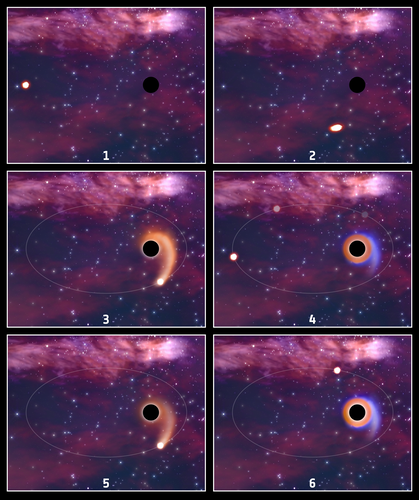
In total, over five days of XMM-Newton observations were used to monitor the change of X-ray light coming from these sources. The extremely sensitive European Photon Imaging Camera on board XMM-Newton helped to study the hot material surrounding the black holes in great detail.
William Alston, ESA Research Fellow, explains the significance of the results. “These new observations are incredibly interesting for studying the influence of supermassive black holes. In typical tidal disruption events, we don’t expect to see a second flare for a few thousand years. With the flares recurring so quickly, the orbit of the disrupted star must have been bound close to the supermassive black hole. These new studies suggest that the disrupted star is pulled into a close orbit after it is ripped away from a binary star system by the central supermassive black hole.”
The teams making the new discovery extend worldwide – in addition to XMM-Newton and eROSITA, the studies involve other missions including NASA’s Neil Gehrels Swift Observatory, The Australia Telescope Compact Array (ATCA) and the Neutron Star Interior Composition Explorer Mission payload on the International Space Station. Collaborations allowed for these unprecedented cosmic events to be observed, modelled, and understood in maximum detail.



